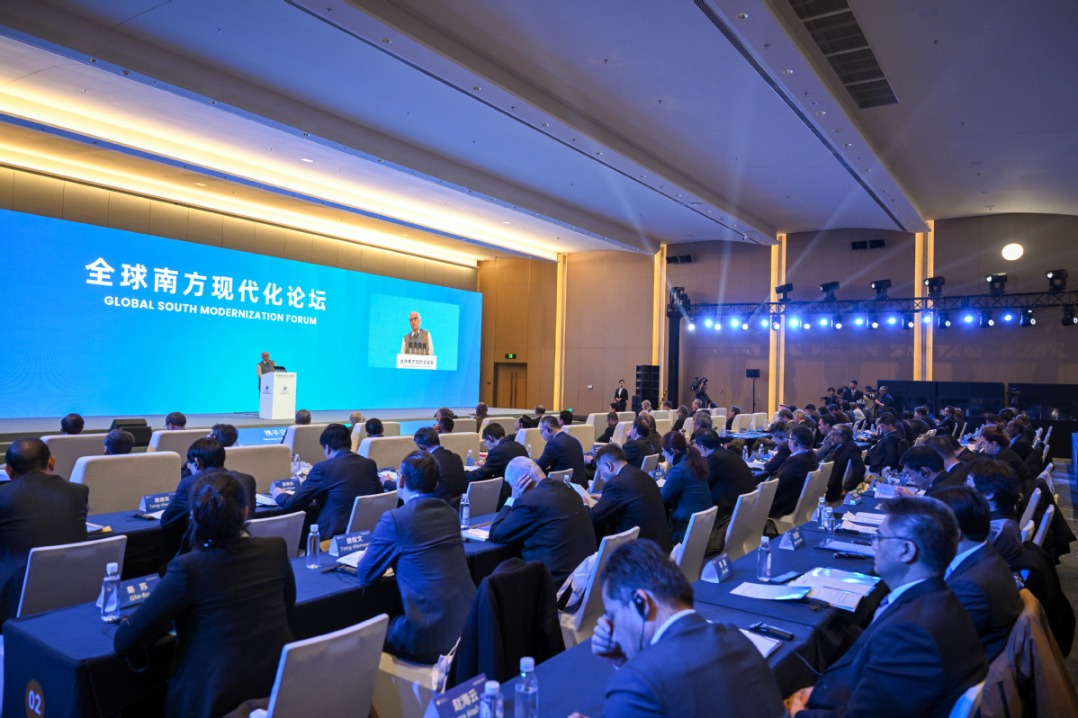Eco-friendly China will continue to improve water quality

Editor's Note: Thanks to years of efforts, China has made some remarkable achievements in the field of environmental protection. But can it overcome the remaining challenges? In the third of a series of commentaries, a senior journalist of China Daily tries to find the answer:
Fortunately or otherwise, moats have been part of my neighborhood throughout my more than 60-year life. Born and brought up in Xi'an, I and my family moved house several times before I shifted to a university in Shanghai. But no matter where we moved, our house was never more than 300 meters away from the moat that circles the ancient city of Xi'an-not far enough to avoid the overpowering stench that wafted night and day from the putrid water of the moat where untreated sewage had been dumped for centuries.
Understandably, my memory of the Xi'an moat is anything but pleasant.
Since I moved to Beijing nearly 40 years ago, I have changed house three times but every time I have had a moat in the neighborhood. Now I live in an area near a moat that formed the northern boundary of the capital of the Yuan Dynasty (1271-1368). But when I shifted to the capital, my house was just 50 meters away from a moat and its stench was no different than that from the one in Xi'an.
A few years after I shifted to the capital, the Xi'an authorities began dredging the moat. Thousands of residents who were forced to endure the stench volunteered to help with the dredging and after years of efforts, they turned the moat into a tourist attraction along with the famous city wall.
It took a few more years for the Beijing authorities to start cleaning the moat near my house. It was dredged and its bed paved. More sewage plants were installed to treat the polluted water which was then re-released into the moat. And restaurants and factories along the moat were shifted elsewhere to prevent untreated water or waste from being discharged into it.
Now the moat is perhaps the most attractive part of the Yuan Capital Relics Park. The 10-kilometer-long moat is my favorite place for evening walk.
The cleaning of the moats in Xi'an and Beijing exemplify the efforts China has made to clean rivers, lakes, canals and moats. China has spent trillions of yuan over the past three decades to improve air and water quality. For instance, hundreds of large-scale chemical and cement plants along the Yangtze and Yellow rivers have been shut down or ordered to shift to other places. The government has also implemented a 10-year fishing ban in the Yangtze River from this year to protect marine life.
A recent study shows the water quality of more than 70 percent of China's lakes has improved since 2000. The study, jointly conducted by scientists from different countries and regions, reached the conclusion after comparing data from all the 412 lakes larger than 20 sq km from 2000 to 2018, which is in line with the government's deadline for improving the "quality of water" by 2020.
While the government's determination, huge investment and strict supervision are responsible for the improvement in water quality, China's unique "river chief mechanism" has also played an important role in the success. The mechanism, introduced in 2007, assigns the upkeep and health of each part of a river to the top official of that area.
A river chief, who can be a provincial governor, city mayor, county head or village leader, has to ensure no pollutants are discharged into the rivers and other water bodies in his or her area. Along the moat near my home in Beijing, there are many billboards with the phone numbers of local authorities who are also the river chiefs of different sections of the moat, asking residents to report any activities that could pollute the moat. I have no idea how many river chiefs there are in China, but I know there are at least five for the 10-km-long moat.
But for all the progress it has made in environmental and ecological protection, China still has a long way to go to improve water quality to the highest level, because despite more than 90 percent of the waste water being treated in urban areas, sewage treatment is not yet effective in rural areas. The only exception is Huzhou, Zhejiang province. Recent reports say Huzhou, which has a population of more than 3 million, collects and treats sewage from over 80 percent of its villages.
Can other areas emulate the example of Huzhou, one of China's richest cities? I hope they can.
Based on China's primary achievements, I am sure the water quality in the country will keep improving.
The author is former deputy editor-in-chief of China Daily.

Today's Top News
- Japan urged to take practical steps to honor its commitments to China
- Direct dialogue on climate change stressed
- Talks prompt Dutch action on Nexperia
- Forum hailed for promoting Global South modernization
- AI-related skills prove to be hot commodity
- Premier in South Africa for G20 Summit






























